In 1995, Jodie Foster, along with screenwriters Chris Radant and W.D. Richter, gave moviegoers an antidote to all of the stereotypically diabetes-inducing feel-good holiday movies with Home for the Holidays. This comedy set during Thanksgiving time tells the story of what really happens when a family gets together for Thanksgiving. The movie is a steadfast and uneasy essay on the rituals that bring relatives together while simultaneously tearing them apart, and while it’s frequently a rough ride, it also offers a hopeful contemplation of those small moments that make our lives worthwhile and that keep even the most dysfunctional families coming back for their annual holiday season torture.
What Is ‘Home for the Holidays’ About?
Jodie Foster divides the story about a family of peculiar individuals gathering for Thanksgiving into four segments: “Flying,” “Mom and Dad,” “Relatives,” “The Birds,” “Cleanup,” and “Now What,” neatly outlining the lead-up to Thanksgiving Day, the inevitable catastrophes that will occur, and the messy aftermath. Claudia Larson (Holly Hunter) has just lost her job, and while being fired, tries to make out with the boss who’s canning her. She’s also about to send her 16-year-old daughter Kitt (Claire Danes) off to spend Thanksgiving with Kitt’s boyfriend’s family, where Kitt is bound to lose her virginity. To say Claudia has some issues to deal with is an understatement. Nonetheless, she gets on a plane headed for Baltimore to endure the holiday. Before she gets there, though, she must first endure the older woman in the seat next to her who has a habit of oversharing and eating hard-boiled eggs.
Director Foster reminds audiences that it’s not just the destination that’s practically unbearable – it’s the journey, too. When Claudia gets to the branchless tree limbs and dreary steel gray skies of late autumn Maryland, she’s greeted by her chain-smoking mother Adele (Anne Bancroft) and portly papa Henry (Charles Durning), who fill Claudia in on the ringworm, ear and paw fungus the family cat is currently experiencing. When hyperactive gay brother Tommy (Robert Downey Jr.) unexpectedly arrives at the Larson home, Claudia is relieved to have another comrade in arms to help her battle the parental hullabaloo. But Tommy has brought along some new guy with him, Leo Fish (Dylan McDermott), and Claudia wrongly assumes Tommy has dumped his long-term boyfriend Jack for this handsome young man. Leo is just an employee of her brother’s, but Tommy, who appears to delight in a bit of psychological torture, doesn’t exactly clear that up for Claudia, leaving her to catastrophize about what may be happening between Tommy and Jack. Tommy’s inclusion in the proceedings adds an extra layer of tension to the atmosphere since even though Mom and Dad must certainly know Tommy prefers boys, they like to inhabit a fantasy world in which he’s an eligible bachelor just waiting for the right girl to come along. Foster uses the Tommy character to zero in on an unwritten rule in several American households – if it’s an uncomfortable subject, but no one talks about it, it doesn’t exist.
‘Home for the Holidays’ Shows Us the Nightmare of Running Into Your High School Nemesis
As if spending Thanksgiving with the family isn’t trying enough, Jodie Foster throws in another potential nightmare – running into old high school classmates. As Claudia trudges along the sidewalk in her mother’s over-sized pink down coat while hauling two overflowing bags of groceries, her nemesis, Ginny the homecoming queen (Amy Yasbeck), zooms by in her convertible, resplendent in a magnificent rust-hued fur, only too happy to let Claudia know how well she’s been doing in the 20 years since graduation.
Foster sets this awkward meeting up against a cemetery backdrop, letting audiences know Claudia’s dying a little inside as she struggles to bear the encounter. While a number of us fantasize about running into the people we couldn’t stand during our school days, hoping things didn’t go well for them, the reality is that they probably ended up doing just fine, and Foster isn’t afraid to show how disappointing those moments can turn out to be.
‘Home for the Holidays’ Delivers a Strong Ensemble of Dysfunctional Characters
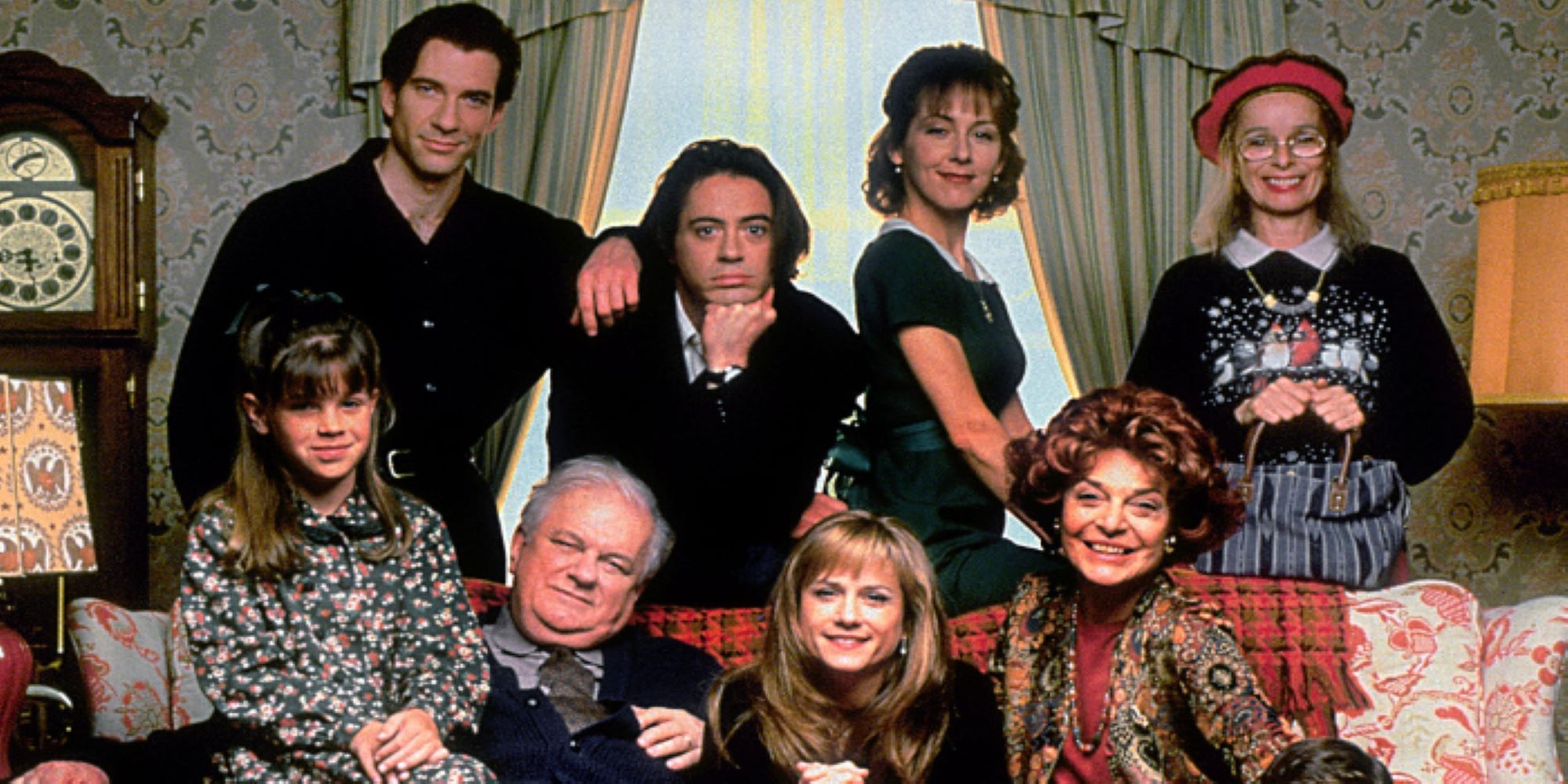
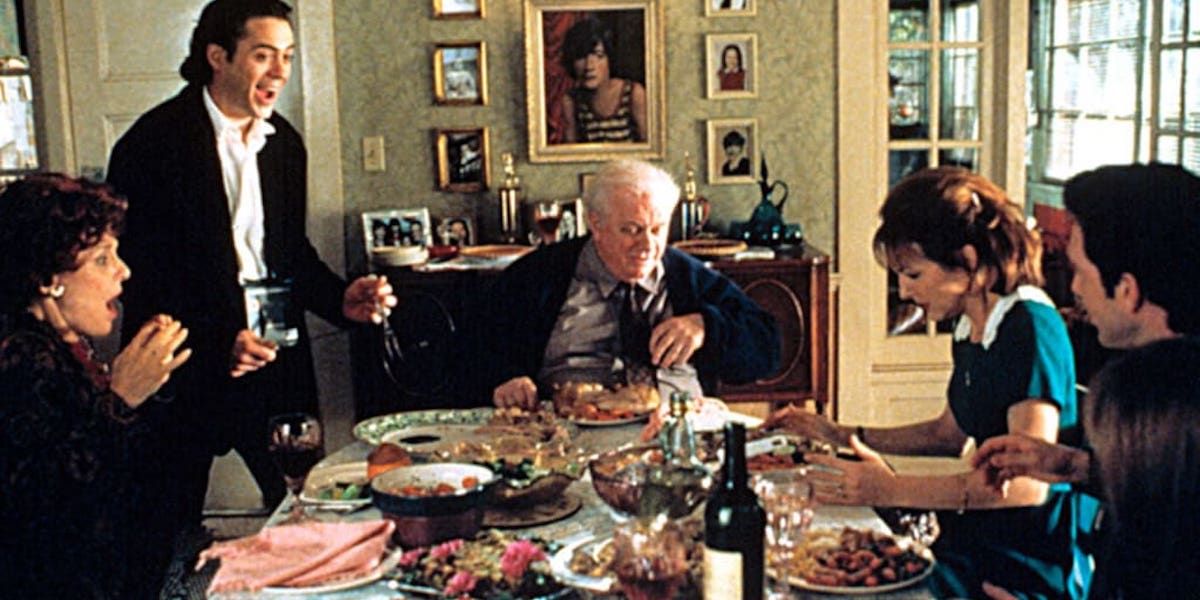
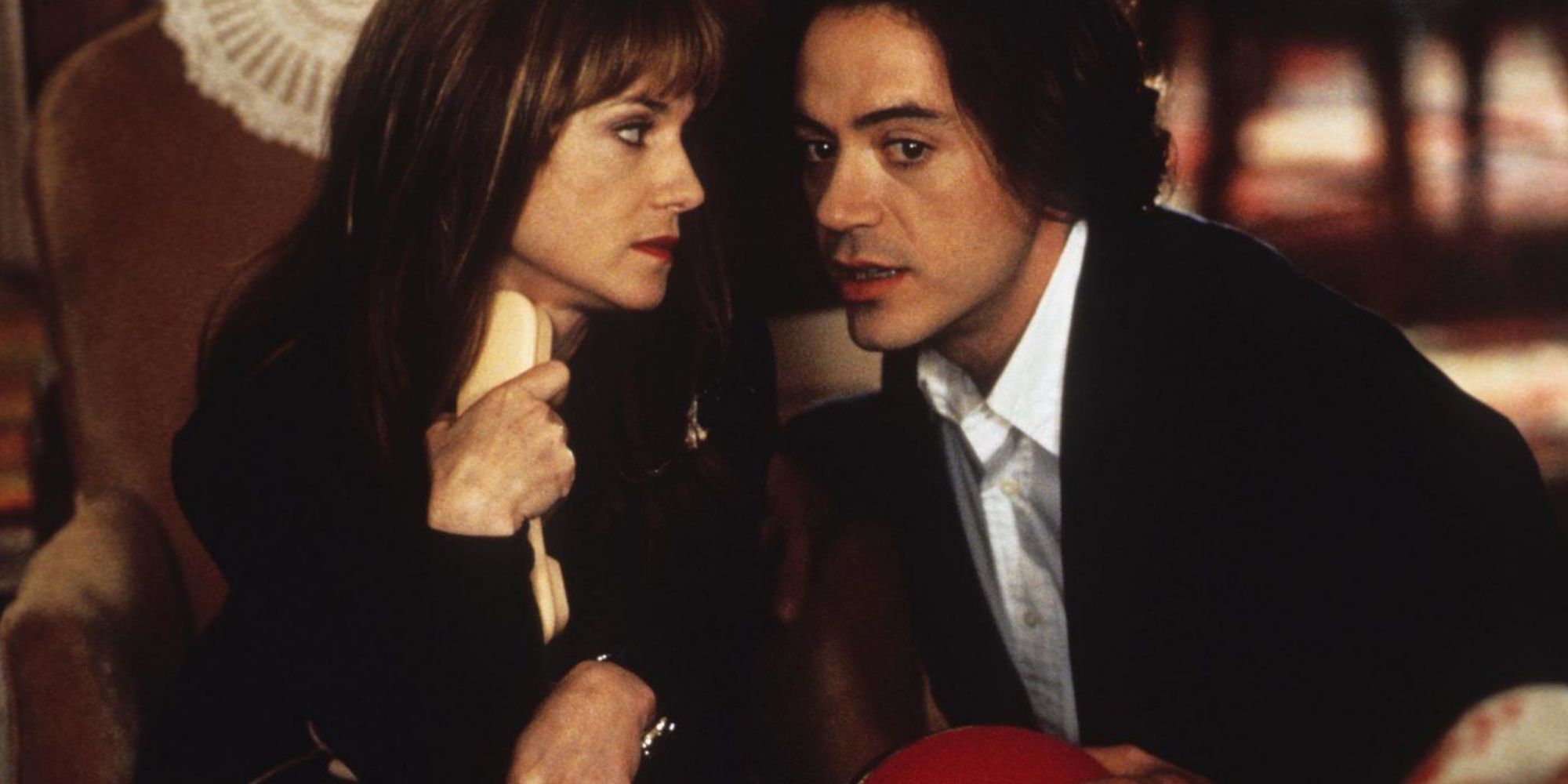
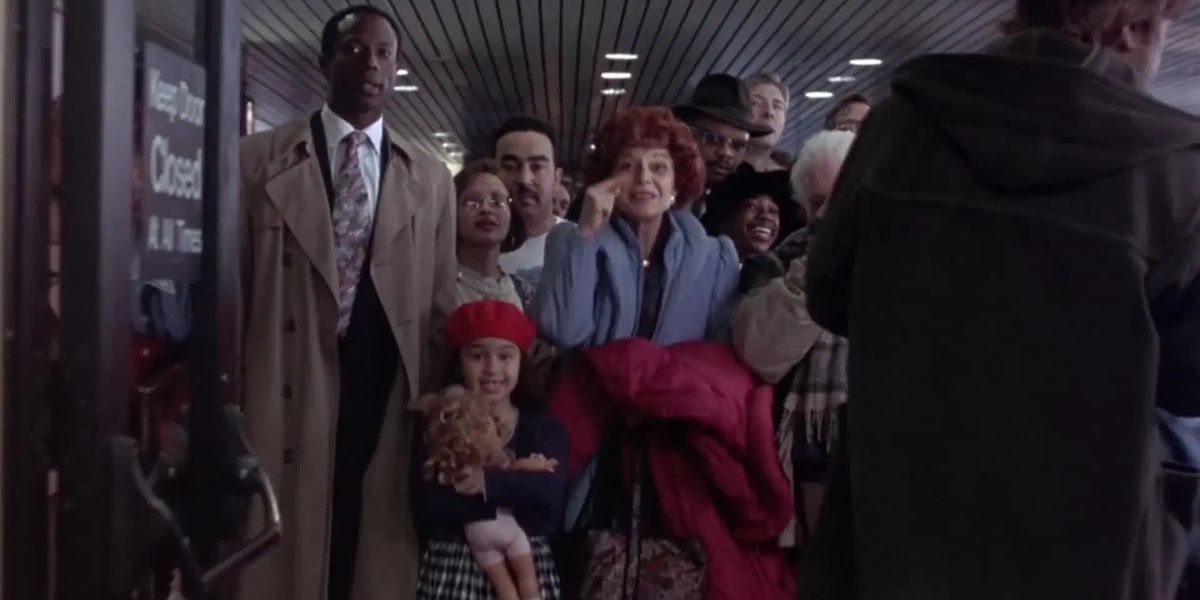
What distressing holiday would be complete without the slightly off-balance relative who has nowhere to go on Thanksgiving? Enter Aunt Gladys (Geraldine Chaplin, in one of her funniest and most touching screen appearances), the retired Latin teacher who lives alone, except for the 210 plants that make her home look like the Brazilian rain forest. “Glady,” as the family calls her, wears a necklace made of Froot Loops and carries around a floor lamp she won on The Price is Right. She also has uncontrollable gas.
The Larson family circus act adds another ring when Claudia’s and Tommy’s uptight sister Joanne (Cynthia Stevenson) arrives for the festivities with her equally uptight husband Walter (Steve Guttenberg) and prissy daughters. Joanne is everything Claudia and Tommy are not – organized, exacting, and exhaustingly efficient. Joanne is a woman on a mission to make Thanksgiving Day run like a well-oiled machine, even if it kills her. She even brings her own turkey to the proceedings. Seeing herself as the long-suffering sibling who stayed behind to take care of Mom and Dad while Claudia and Tommy ran off to live their “exotic lives,” Claudia is a dormant volcano in a Laura Ashley dress, filled with resentment and rage, waiting to erupt, and it’s not long before the lava begins bubbling up.
What Happens During the Dinner Scene in ‘Home for the Holidays’?
Things begin to go south in Home for the Holidays as the family sits down to eat their two birds and as Aunt Glady finishes her fifth glass of Chardonnay. In an alcohol-fueled confession, Glady lets everyone know she’s been in love with her sister’s husband since the first time she laid eyes on him 43 years earlier. “For one special moment, my own little life was as big as I could ever want it to be,” Glady confides to the stunned group at the table. “Whenever I look at your father, I know how lucky my sister must be, because he made all my dreams come true for her.” It’s a bittersweet moment because while Glady affirms her lifelong pain for the first time, she also basks in the beautiful memory of how alive she felt on “Thanksgiving Day, 1952, 2:00 in the afternoon.”
As the family does its best to change the subject and pretend that another uncomfortable moment didn’t just happen, Tommy furiously carves up Joanne’s bird and accidentally catapults it right into her lap. That flying dead turkey is really just a metaphor for the futile attempts to keep secrets in their place and truths from escaping. Once the turkey hits Joanne, it’s like the evil spirits from Pandora’s Box have been released. The formerly buttoned-up and proper Christian woman shrieks at Tommy with a hatred so guttural it could make the wallpaper in the dining room melt off. Joanne spews as she unleashes Tommy’s big secret.
For Joanne, it’s not so much her brother being gay that bothers her; it’s that it embarrasses her, and that’s another key truth Foster brings to light in the film. The holidays become such a source of anxiety and stress for families because everyone is busy exhausting themselves to keep anything upsetting from coming to light. After all, isn’t the holiday season based on the false notion that everyone loves each other unconditionally, no one ever makes a misstep, and there’s no such thing as imperfection? In perhaps the most brutally honest moment of the film, Claudia tries to apologize to Joanne. Joanne’s reaction cuts to the core. “If I just met you on the street,” Joanne tells her sister, “if you gave me your number, I’d throw it away.” Claudia, exasperated and defeated, asks Leo, “When you go home, do you look around and wonder, ‘Who are these people? Where did I even come from?’ You look at them all sitting there, you know? They look familiar, but who the hell are they?”
Jodie Foster’s ‘Home for the Holidays’ Reminds Us Why We Keep Holiday Traditions Alive
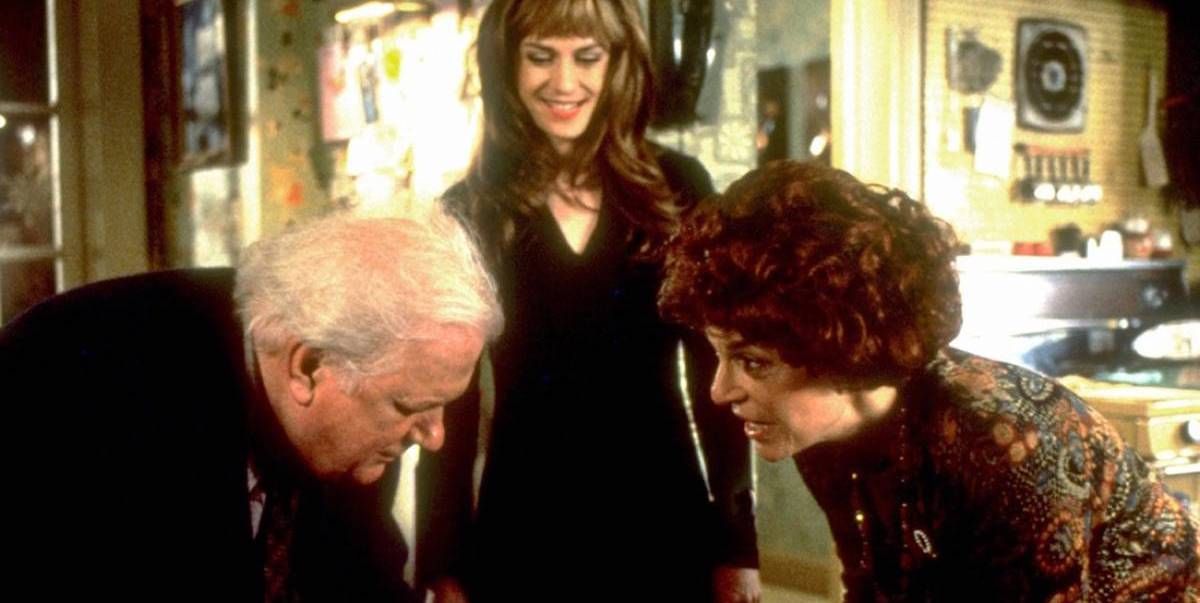
The brilliance of Home for the Holidays isn’t just in the way it rips down the facade of the blissfully happy American family, but in the way, in its final act, it also reminds us of why family is important, even if it doesn’t always come neatly wrapped in a package with a pretty bow on top. When Aunt Glady confesses her love for Henry, she mentions three words – “one special moment.” The one special moment that made Glady’s life worth living and that keeps her returning to her family is the memory of the first time she saw Henry. It was everything to her.
Jodie Foster ends the film with a poignant montage of each member of the Larson family recalling their “one special moment,” accompanied by the beautiful voice of Nat King Cole singing “The Very Thought of You.” Henry recalls holding his family close as they watched a magnificent 727 jet soar into the air. Adele remembers the first time Henry held her during a bowling date in their youth. Tommy remembers his wedding on the beach to Jack. Joanne remembers a playful moment with Walter as they moved into their first home. And for Claudia, it’s a moment that’s occurring in real-time, cradled in Leo’s arms as they both head back home on the plane. All the pain, sorrow, and angst. It’s all worth it for that one special moment, and it’s why we keep the holiday traditions going.




